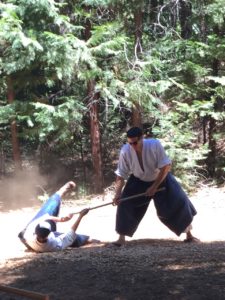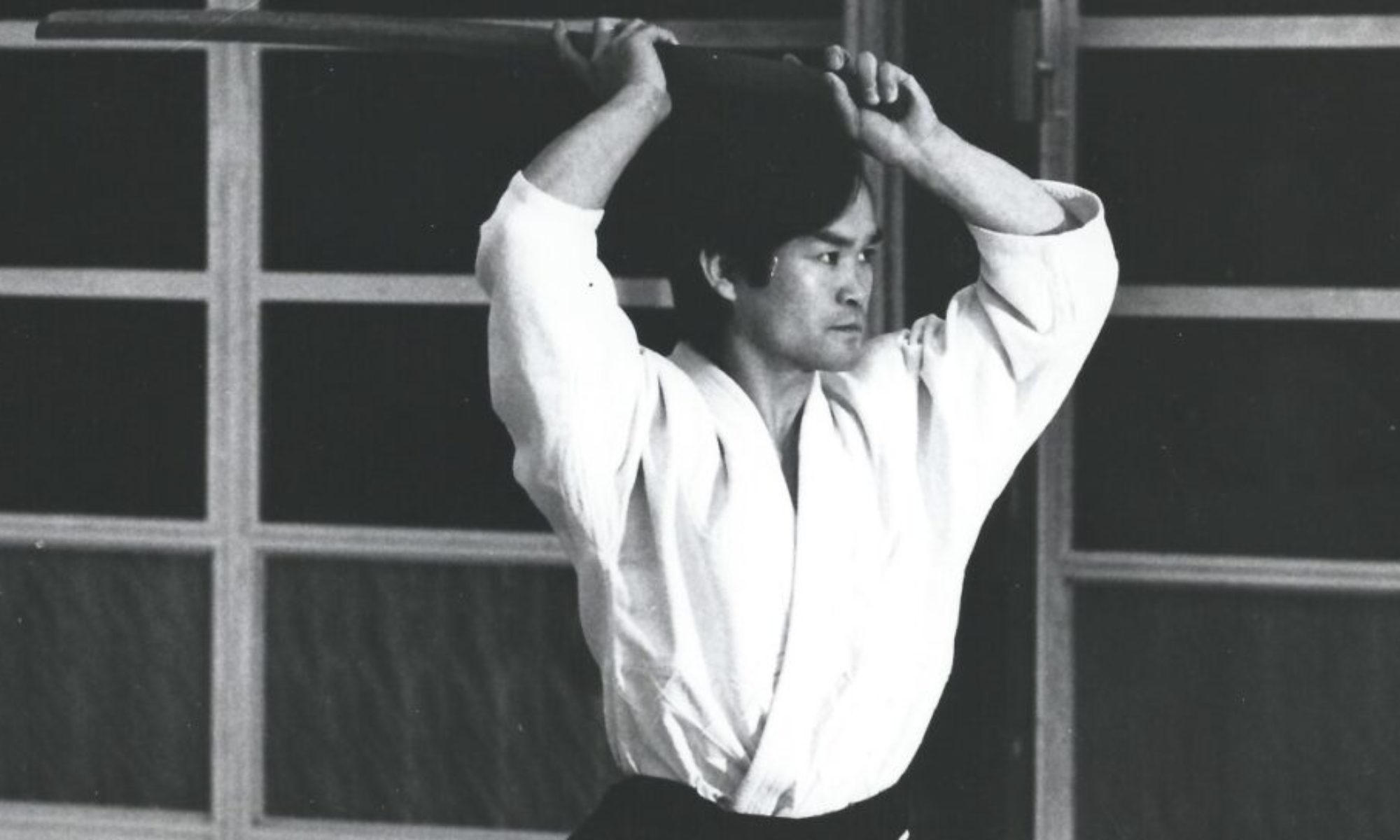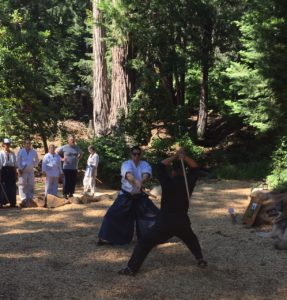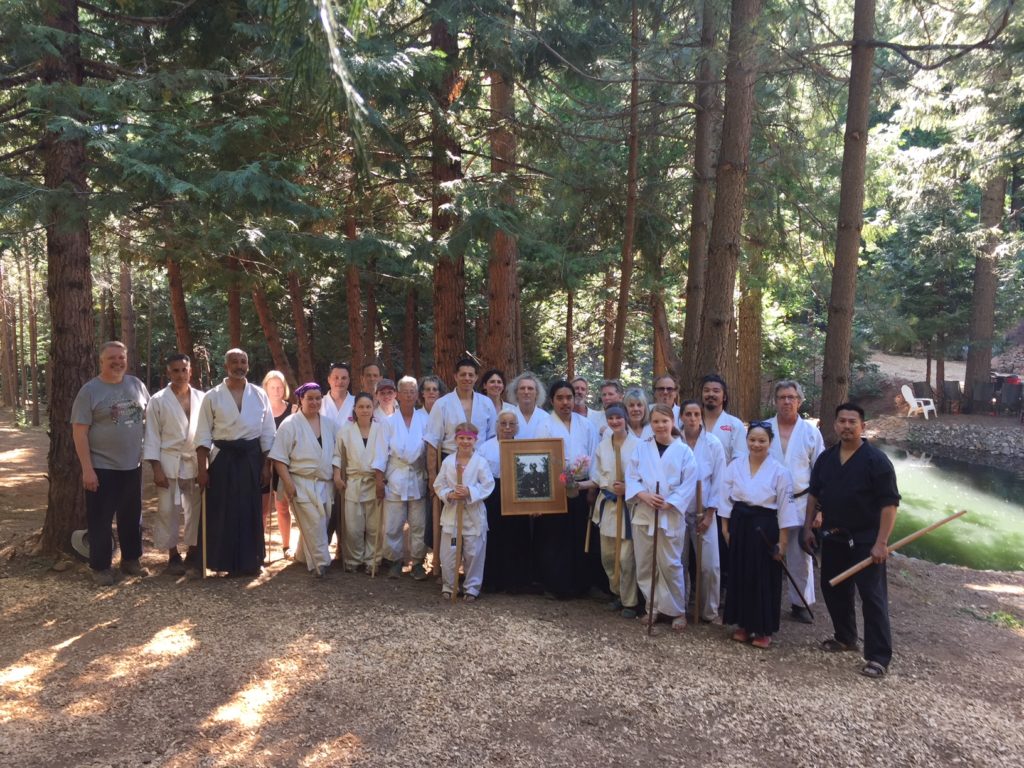
Thirty students gathered at Grass Valley Aikikai Chief Instructor Cecilia Ramos Sensei’s home, ten acres ten miles into the Sierra Nevada mountains, for the 2018 Mountain Weapons Seminar with Frank Apodaca Shihan of Deep River Aikikai. We were pleased to host students from San Diego Aikikai, Summit Aikikai, Alameda Aikikai, and Aikido Institute of San Francisco, along with visitors from Chico.
The importance of correct usage of the feet and twisting movements, was the theme of the day. With jyo in the morning and bokken in the afternoon, basic strikes and movements were reviewed. There were beginners and youth, so the material was appropriate for their level, yet by the end, the senior students realized the teaching was thoughtful and presented a deep understanding that Apodaca Sensei has developed through his personal training.
After the last class, kids and dogs went swimming. Then the make-your-own pizza party got started! Afterward, some people had to get home, but lots stayed for a campfire and conversation. The next morning those that were still around had an unplanned class at the dojo. It was interesting to apply the footwork and twisting themes from the day before to body arts.
The day before the seminar Apodaca Sensei visited Grass Valley Aikikai and conducted a shodan test for Marci Martinez, who passed. We were so happy to include out of town guests and all visit together over tacos at the dojo.
Looking back, we realized that while we officially hosted a one day seminar, that in reality it turned into a three day event. So we decided next year we should just turn it into a proper three day seminar – Friday night, all day Saturday, Sunday morning! We invited Apodaca Sensei to come again and he said he would! So make your plans – probably next year the weekend after Father’s Day. Why not make a vacation of it? Bring your family and spend a week seeing the sights and enjoying the beautiful Sierras. Do come if you can. Everyone is welcome.


